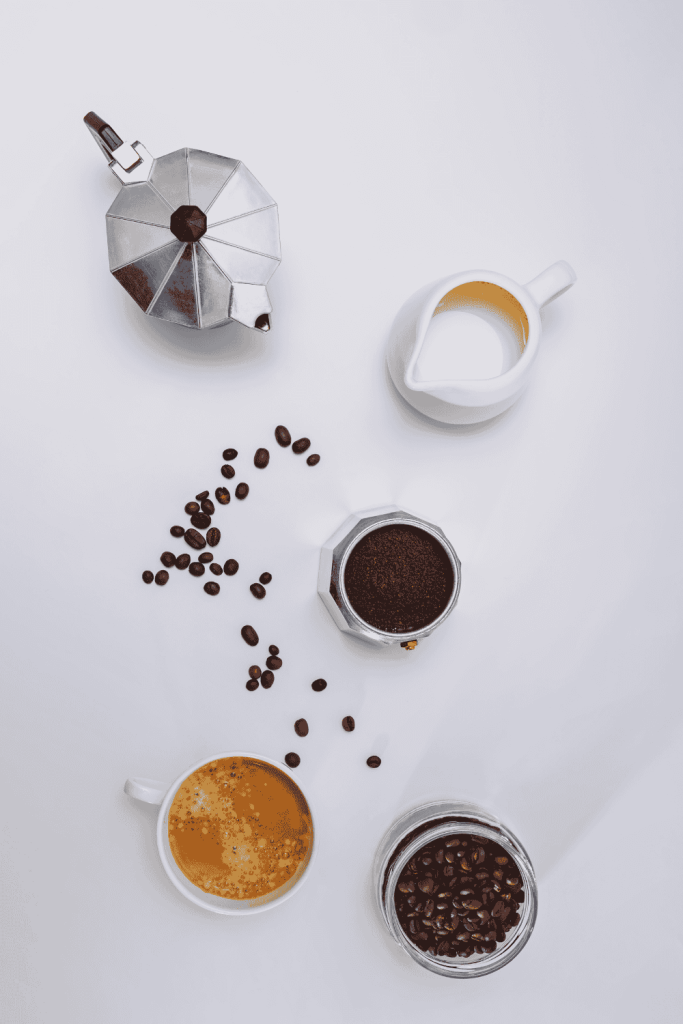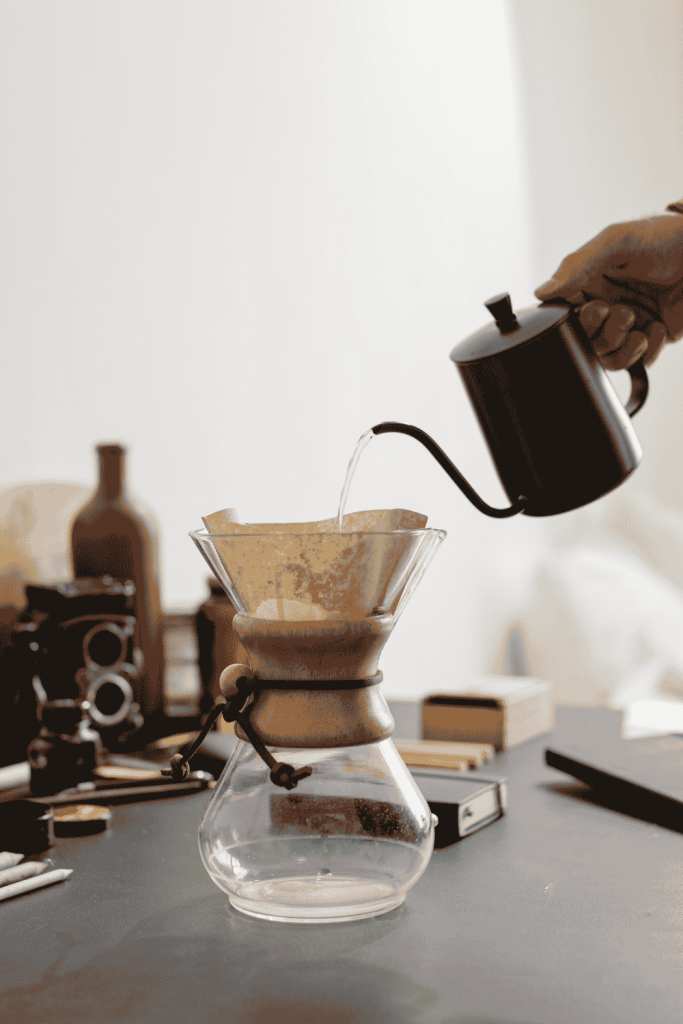The best home brew coffee method I love is split between pour-over and moka pot. I love the pour-over on slow mornings and the moka pot when I want something strong enough to wake the dead. After years of trial and error—drip machines, French press, capsule pods, and one regrettable flirtation with instant—I’ve found these two methods to be the best way to make coffee for one person without sacrificing taste.
This isn’t a beginners guide to coffee at home, though you’ll probably pick up a few tips anyway. I’ll walk you through what makes each method special, the best pour-over coffee to water ratio and how to make a great cup with the smallest moka pot.
I’ll also get into why the best moka pot size for one person depends on how much bitterness you can tolerate before 9 a.m., and why pour-over, while slower, might be the easiest way to make good coffee. Well, if you’re the sort of person who owns a kitchen scale and likes silence in the morning.
This is about the ways to brew coffee at home that have made sense in my life, and maybe, in some roundabout way, yours too.
Why I Love the Moka Pot and Manual Pour-Over
I switch between the moka pot and manual pour-over like most people switch playlists. The moka pot is for days when I want a cappuccino before 8 a.m. It makes bold, almost espresso-like coffee.
The pour-over, on the other hand, is the method I trust when I want clarity, in both coffee and life. Yes, that means daily. It’s slow, quiet, and doesn’t demand much beyond a kettle, chemex, filter paper, and patience. The flavor is balanced and clean, no bite, just a steady warmth.
Both methods work for one person. I live alone, so I’ve had time to figure this out. The smallest moka pot is technically for three cups, but those are espresso-sized. Realistically, it brews just enough for my coffee addiction. The pour-over is even simpler. One cone, one filter, one mug. It’s the best way to make coffee for one person if you’re prone to introspection.
Researchers have suggested that filtered coffee—like pour-over—may be safer for people worried about cholesterol, though they stop short of calling coffee health food. Still, the statistics lean in favor of people who drink one to four cups of filtered brew a day. That’s the sweet spot, apparently.
So on most mornings, I choose based on mood. If I want punch, I go moka. If I want peace, pour-over. Both work and neither has let me down yet.

How to Brew Coffee with a Moka Pot
Brewing with a moka pot feels like operating a tiny, angry steam engine. Still, once you get the rhythm right, it’s as simple as making toast—assuming your toaster can hiss. It’s part of what makes this the best home brew coffee method for me. Here’s how I do it most mornings:
Prepare the Moka Pot
- Fill the bottom chamber with hot water, stopping just below the safety valve.
- Use a kettle instead of the tap to avoid over-extracting bitter notes.
- Drop in the funnel filter carefully. Burnt fingertips are a rite of passage.
Add Ground Coffee
- Use a medium grind—coarser than espresso, finer than drip.
- Fill the basket to the top, but don’t tamp.
- Gently tap the side to level the grounds. No pressure needed. Literally.
Assemble and Heat
- Screw the top on tightly. This is not the time for half-commits.
- Set the moka pot over medium-low heat.
- Leave the lid open if you like to watch the coffee rise. I do. It’s weirdly satisfying.
Brew and Serve
- Listen for a soft gurgle. That means the coffee’s coming up.
- Remove from heat immediately once the stream starts. If it sputters, you’ve gone too far.
- Pour and serve.
A few small things that make a difference:
- Grind size: Medium, always. Too fine and you’ll get sludge.
- Water quality: Filtered or bottled. Tap water makes it taste like tap water.
- Heat: Keep it low. High heat rushes the process and scorches the flavor.
- Timing: Remove the pot from the heat the moment coffee begins to stream, not when it sputters or froths. That final noise means you’re too late.
- Bonus tip: A paper Aeropress filter in the basket cuts down on grit. Quietly genius.
See, it’s not fussy. And the moka pot is easier to clean than a $600 espresso machine. Double win!
How to Brew Coffee with a Manual Pour-Over
Manual pour-over is the opposite of instant. It asks for patience, two hands, and a passing interest in physics. But it rewards you with clean, balanced coffee.

Here’s how I do it:
Prepare the Coffee and Water
- Grind your beans: Use a medium-coarse grind, like table salt. I use a Hario Slim Hand Grinder. It’s easy to use, portable, well-built, and sturdy.
- Heat your water: Aim for 195 to 205°F. I use a gooseneck kettle like I know what I’m doing.
- Preheat everything: Wet the paper filter to get rid of the papery taste. This also warms the dripper and your mug.
Set Up and Brew
- Add your coffee: Pour the grounds into the filter. About 15 to 18 grams if you’re measuring. That’s roughly a 1:16 coffee-to-water ratio if you’re going for a balanced cup.
- Let it bloom: Pour just enough water to soak the grounds. Wait 30 to 45 seconds while it bubbles and puffs like it’s waking up. That’s carbon dioxide escaping. Too much gas and the water can’t get in.
- Finish the pour: Pour the rest of the water in slow, steady spirals. Keep the water level just below the top. Don’t rush. Watch it drip. Meditate if you must.
- Remove the cone: Once the water’s gone and the bed looks flat, take the dripper off. No need to press or swirl.
Enjoy
- Pour your coffee. Taste it. No sugar, if you can help it.
It’s the best way to make coffee for one person without the guilt, offering a smooth, less acidic taste.
Final Thoughts
In the end, the best home brew coffee method is the one that fits your mood. Whether it’s the bold simplicity of a moka pot or the meditative pour-over, it’s about finding what works for you. Making your own cup forces you to slow down, even if just for a few minutes. It’s not about perfecting the brew—just savoring the process. And honestly, that’s the real joy of it all. So, pick your method, take your time, and enjoy that first sip.
